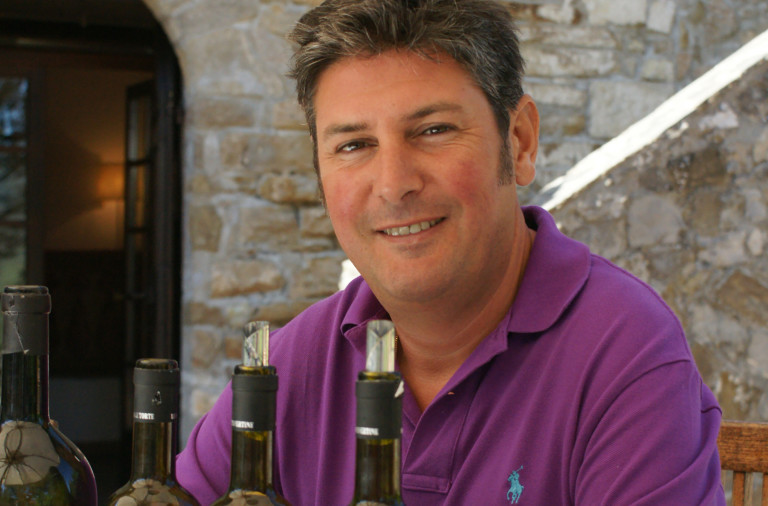Articolo disponibile anche in: Italian
It is difficult to tell the story of Montevertine in the space of a newspaper article. When we talk about something excellent we risk forgetting a detail.
That is the case with that small and apparently insignificant vineyard; six or seven rows, irregularly planted and not exposed to the sun and facing north-east, but on an ideal red and ferrous soil, able to produce a magnificent grape.
In the early ’70, from those “pergole torte” (“twisted bowers”), (the steel manifacturer Sergio Manetti found the vines next to his new house purchased at a very low price from the Curia of Fiesole in the countryside around Radda in Chianti), was born one of the most known and appreciated wines of the entire world.
Manetti was not a “man of the soil”, he did not grow up in the vineyards. He was an upstart of viticulture, but with a natural instinct for business and a visceral attraction to beauty; a collector, lover of art and literature, but at the same time a pragmatic man.
He was the first to make a wine in the heart of Chianti with pure Sangiovese grape, to use barriques, to understand the importance of marketing.
Manetti was a pioneer who clashed immediately with the Chianti Classico rules of the past – the first harvest dates back to 1971 – rules that were incompatible with the use of a monovitigno (one kind of grape only). Inevitable and painful, but well thought out, was the decision to exit the Consortium Association of Wine Producers and choose to produce a table wine, which then become IGT (tipical geographical indication).
Manetti died prematurely in 2000, but his philosophy is continued by his son Martino who inherited and continued to stake everything on quality: quality of vineyards, grapes, organic farming without machines, as well as the quality of the workplace.
14 locals work at Montevertine. The one who lives farther lives in Florence, but has origins in Chianti. Essentially, this is a family.
“My father – tells Mr. Manetti – was one of the first to propose something new, and he did it with a newcomer’s great enthusiasm and naivety, when the Chianti Classico was a flask wine only, very distant from today’s wine. Of course, there have been favorable additions to his business: first of all a place extremely suitable for a quality viticulture, then the friendship with Giulio Gabelli, the oenologist who taught Martino how to make wine according to tradition, wine that in his opinion had one name only: Sangiovese”.
Friendship is another great element of this story. Important was the friendship with Alberto Manfredi, the painter, who in 1982 proposed to Mr. Manetti to create some labels with his drawings to juxtapose on the official bottles.
The wine was an immediate success, so much so that a few years later only the artistic labels remained, “Pergole Torte” (twisted bowers), making it a real “brand”.
It is a wine that is famous everywhere and known throughout the world as a product of the Chianti Classico area, but it remains outside of the official organizations of the historic brand.
This can be considered a paradox that Martino Manetti explains as the consequence of his father’s choices. “We have never changed our idea and we try to look ahead by focusing on innovation and tradition. Now there is a new generation of winemakers that has greater openness, that travels and learns, especially from abroad”.
Behind Manetti’s desk in his office there are two topographical maps depicting French production areas. “A long time ago we began saying that the Chianti Classico area needs zoning like in France, our territory is too specific and heterogeneous” he said, referring to the French method: “With the quality of the individual wine we can compete, as for the rest we are two hundred years behind”.
And how it will Montevertine be in the future? “As it has always been, but more and more in line with the times. Our challenge is to maintain the quality making always good wines”.
After all, concludes Manetti “our customers want just this from us: It is a huge responsibility but also an absolutely stimulating incentive”.
Matteo Morandini






